Foundation Year
The English curriculum is built around the three interrelated strands of language, literature and literacy. Teaching and learning programs should balance and integrate all three strands. Together, the three strands focus on developing students' knowledge, understanding and skills in listening, reading, viewing, speaking, writing and creating. Learning in English builds on concepts, skills and processes developed in earlier years, and teachers will develop and strengthen these as needed.
In the Foundation year, students communicate with peers, teachers, known adults and students from other classes.
Students engage with a variety of texts for enjoyment. They listen to, read and view spoken, written and multimodal texts in which the primary purpose is to entertain, as well as some texts designed to inform. These include traditional oral texts, picture books, various types of stories, rhyming verse, poetry, non-fiction, film, multimodal texts and dramatic performances. They participate in shared reading, viewing and storytelling using a range of literary texts, and recognise the entertaining nature of literature.
The range of literary texts for Foundation to Year 10 comprises Australian literature, including the oral narrative traditions of Aboriginal and Torres Strait Islander Peoples, as well as the contemporary literature of these two cultural groups, and classic and contemporary world literature, including texts from and about Asia. Literary texts that support and extend Foundation students as beginner readers include decodable and predictable texts that range from caption books to books with one or more sentences per page. These texts involve straightforward sequences of events and everyday happenings with recognisable, realistic or imaginary characters. Informative texts present a small amount of new content about familiar topics of interest; a small range of language features, including simple and compound sentences; mostly familiar vocabulary, known, high-frequency words and single-syllable words that can be decoded phonically, and illustrations that strongly support the printed text.
Students create a range of imaginative, informative and persuasive texts including pictorial representations, short statements, performances, recounts and poetry.
(source: www.australiancurriculum.edu.au)
Achievement Standard
Receptive modes (listening, reading and viewing)
By the end of the Foundation year, students use predicting and questioning strategies to make meaning from texts. They recall one or two events from texts with familiar topics. They understand that there are different types of texts and that these can have similar characteristics. They identify connections between texts and their personal experience.
They read short, decodable and predictable texts with familiar vocabulary and supportive images, drawing on their developing knowledge of concepts of print, sounds and letters and decoding and self-monitoring strategies. They recognise the letters of the English alphabet, in upper and lower case and know and use the most common sounds represented by most letters. They read high-frequency words and blend sounds orally to read consonant-vowel-consonant words. They use appropriate interaction skills to listen and respond to others in a familiar environment. They listen for rhyme, letter patterns and sounds in words.
Productive modes (speaking, writing and creating)
Students understand that their texts can reflect their own experiences. They identify and describe likes and dislikes about familiar texts, objects, characters and events.
In informal group and whole class settings, students communicate clearly. They retell events and experiences with peers and known adults. They identify and use rhyme, and orally blend and segment sounds in words. When writing, students use familiar words and phrases and images to convey ideas. Their writing shows evidence of letter and sound knowledge, beginning writing behaviours and experimentation with capital letters and full stops. They correctly form known upper- and lower-case letters.
(source: www.australiancurriculum.edu.au)
- Plus Plan
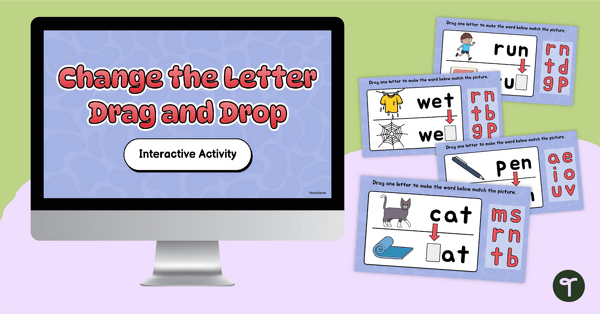
CVC Change the Letter Digital Activity
Use this CVC change the letter digital activity to help students develop their phonemic awareness skills through phoneme manipulation
- Plus Plan
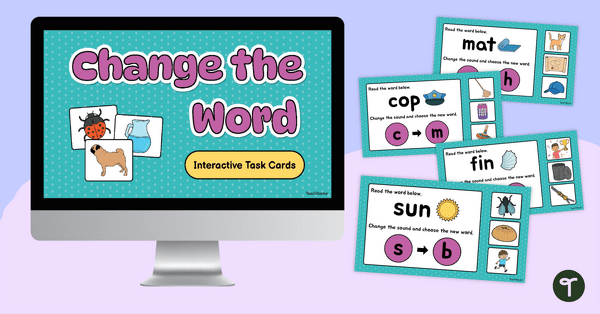
Phoneme Manipulation Interactive Task Cards
Practise phoneme manipulation with your students using this fun and engaging interactive activity.
- Plus Plan
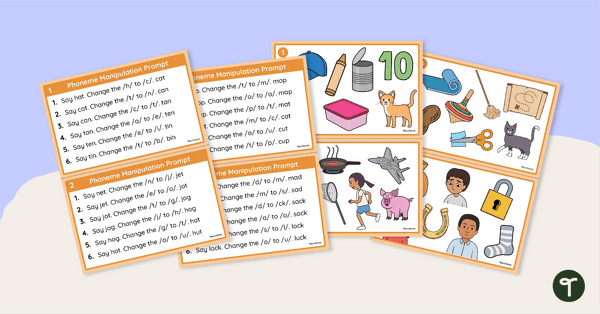
Phoneme Substitution Activity Cards
Explore phoneme substitution with this interactive phonemic awareness learning activity.
- Plus Plan
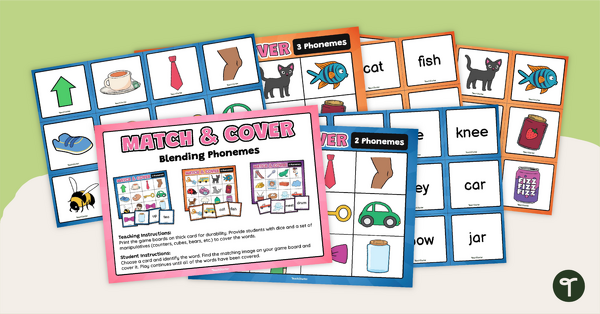
Match and Cover Blending Phonemes Game
Engage your students in blending phonemes with this set of ‘Blend and Cover’ game boards.
- Plus Plan
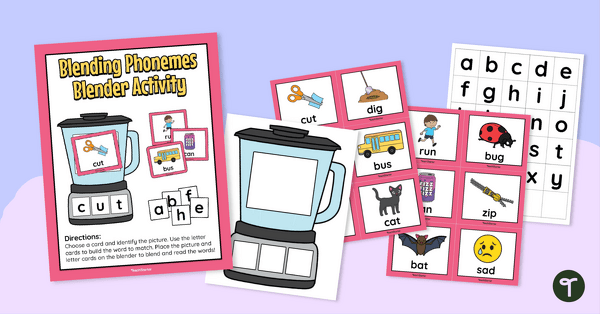
Phoneme Blending Blender Activity
Set your students up for success when learning to blend phonemes by using this fun blender activity to practice blending simple CVC words.
- Plus Plan
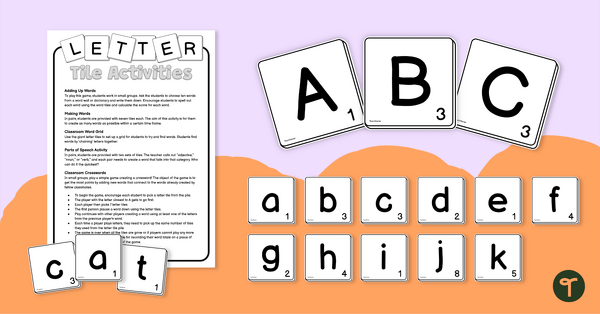
Giant Letter Tiles with Numbers
Use these giant letter tiles for a variety of vocabulary and spelling activities for your students.
- Plus Plan
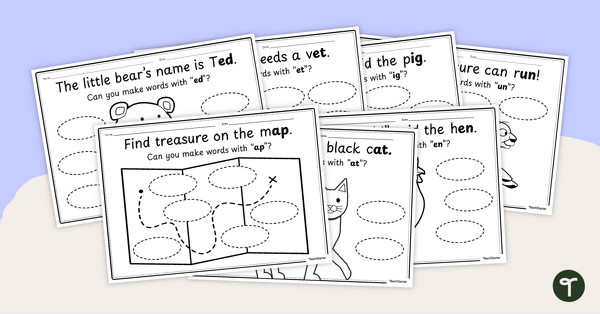
Onset and Rime Worksheet Pack
Explore all the different word families based on onset and rime words with this fun and engaging onset and rime worksheet pack.
- Plus Plan

Roll and Cover Onset and Rime Activity Sheets
Practise decoding onset and rime words with this short vowel onset and rime activity pack.
- Free Plan
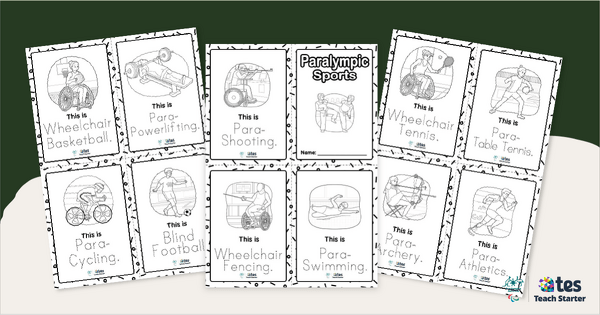
Paralympic Sport -Trace and Colour Booklet
Teach your littlest learners about the Paralympic Games with a printable Trace and Colour Handwriting Booklet.
- Plus Plan
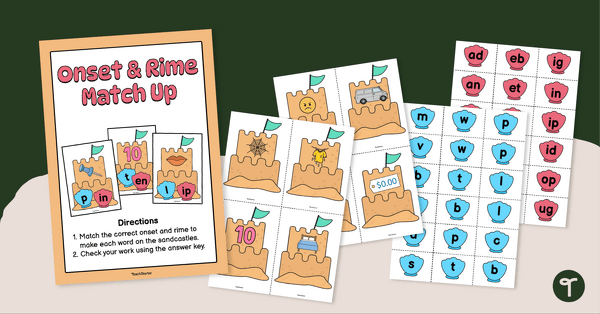
Onset and Rime Sandcastle Matching Activity
Match up the onset, rime and picture in this activity to create sandcastles.
- Plus Plan
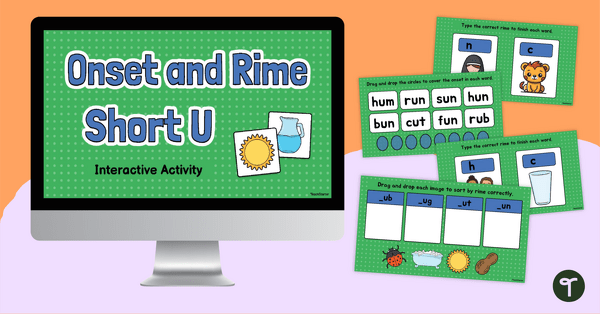
Onset and Rime Short U Interactive
Practise onset and rime words that contain the short U vowel sound with this interactive activity for the early years classroom.
- Plus Plan
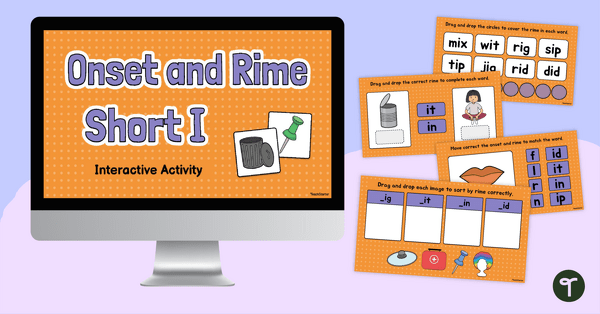
Onset and Rime Short I Interactive
Practise onset and rime words that contain the short I vowel sound with this interactive activity for the early years classroom.
- Plus Plan
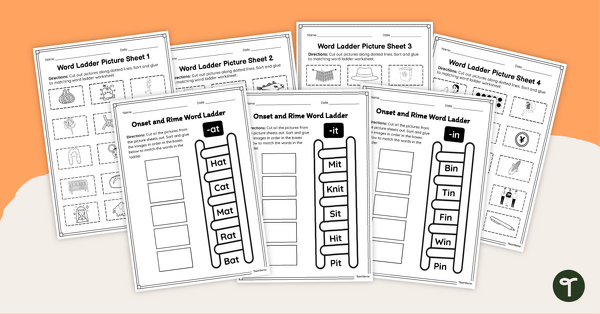
Onset and Rime Word Ladder Worksheet Pack
Climb the virtual ladder of onset and rime knowledge with this set of onset and rime worksheets.
- Plus Plan

Short I Word Families Flashcards
Use these word families flashcards to help familiarise your students with words that contain the short i vowel sound.
- Plus Plan
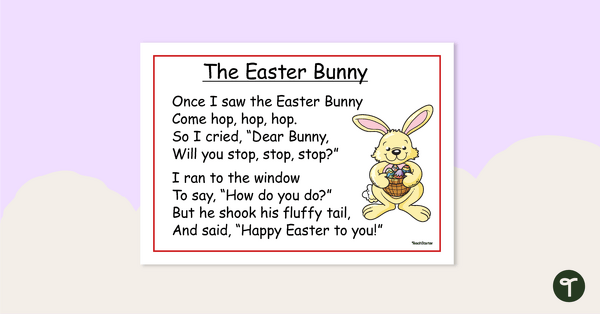
The Easter Bunny – Easter Poem Poster
Use this Easter Bunny poem for kids as a basis for some Easter fun in your classroom!
- Plus Plan

Onset and Rime Short O Teaching Slides
Learn about onset and rime and the different short vowel o onset and rime words with this vibrant set of teaching slides
- Plus Plan
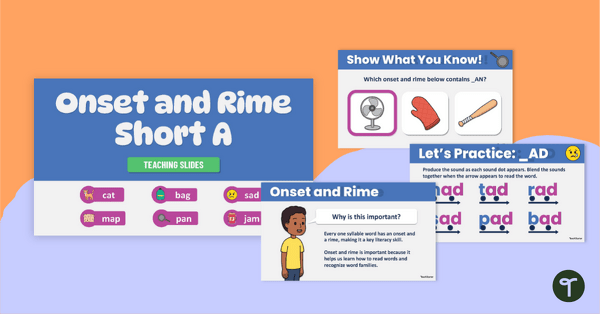
Onset and Rime Short A Teaching Slides
Learn about onset and rime and the different short vowel u onset and rime words with this vibrant set of teaching slides.
- Plus Plan
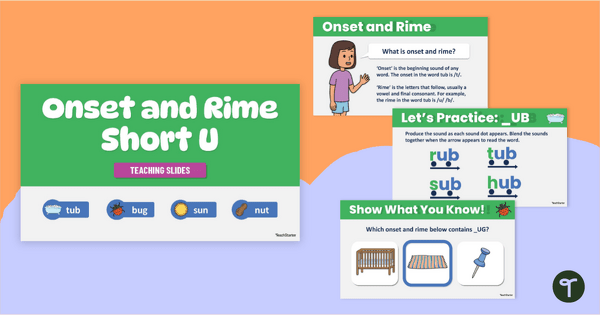
Onset and Rime Short U Teaching Slides
Learn about onset and rime and the different short vowel u onset and rime words with this vibrant set of teaching slides.
- Plus Plan
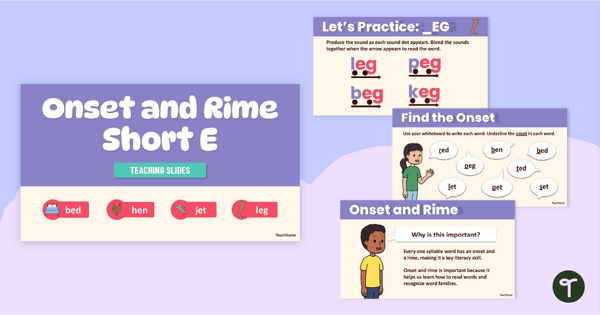
Onset and Rime Short E Teaching Slides
Learn about onset and rime and the different short vowel e onset and rime words with this vibrant set of teaching slides.
- Plus Plan

Penguin Rime Interactive Word Family Sort
Help these chilly word family penguins escape the cold water by sorting them onto the correct ice floes.
- Plus Plan
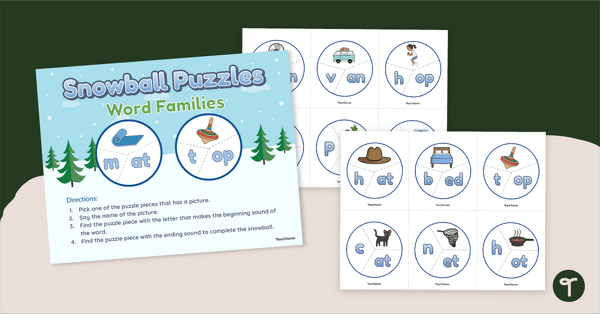
Snowball Onset and Rime Puzzle
Enhance your phonics lessons with a set of snowball-themed onset and rime puzzles.
- Plus Plan
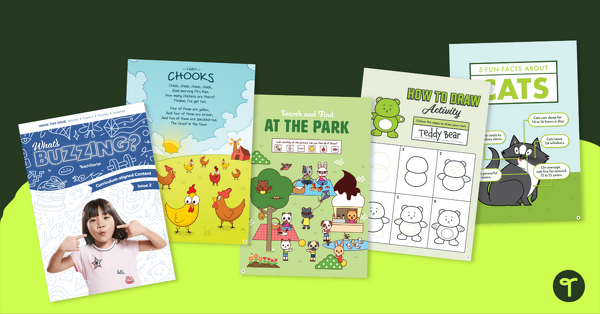
Foundation Magazine - What's Buzzing? (Issue 2)
Issue 2 of our beautifully designed, 16-page reading magazine specifically designed for Foundation students.
- Plus Plan
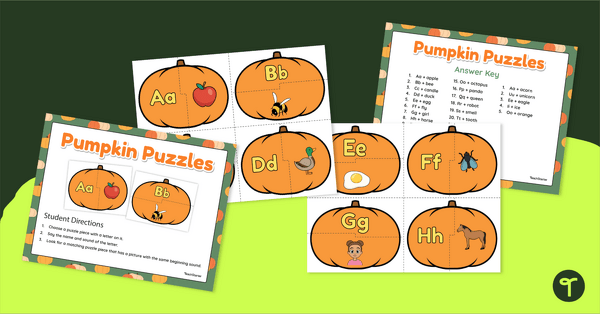
Pumpkin Puzzles - Initial Sounds Matching Game
Pick up letter-sound correspondence with a pumpkin picture puzzle matching activity.
- Plus Plan

Foundation Magazine – What's Buzzing? (Issue 3)
Issue 3 of our beautifully designed, 16-page reading magazine specifically designed for Foundation students.
- Plus Plan
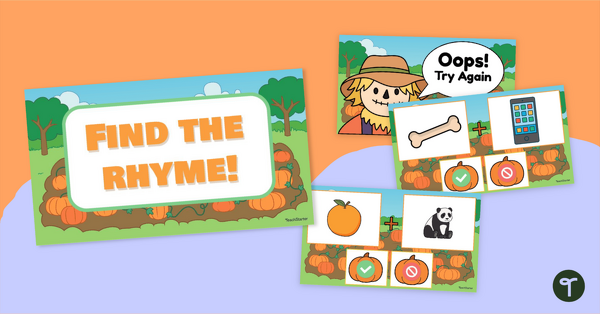
Pumpkin Patch-Find the Rhyming Word Game
Bring some rhyming fun into classroom with an interactive rhyming word game for year 1.
- Plus Plan
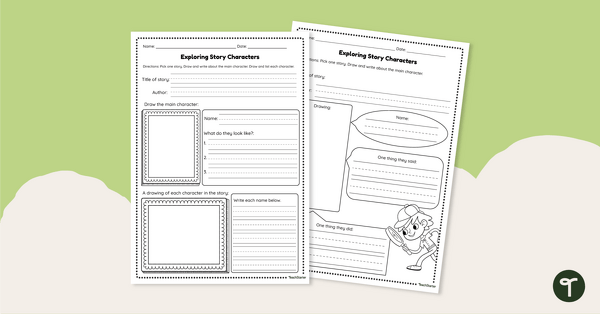
Exploring Story Characters - Worksheets
Explore the defining features of story characters with this differentiated worksheet.
- Plus Plan

Character or Not? - Interactive Activity
Explore the difference between characters and non-characters with this digital learning activity.
- Plus Plan
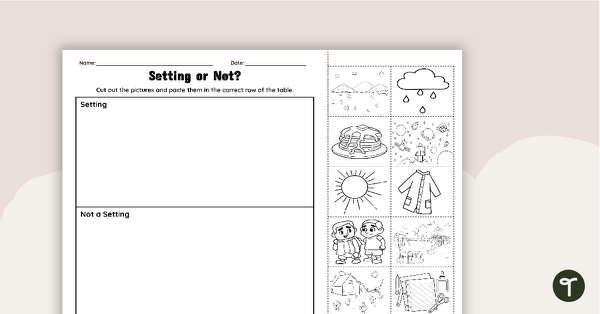
Story Setting or Not? Cut and Paste Worksheet
Explore the difference between story settings and non-settings with this cut-and-paste worksheet.
- Plus Plan
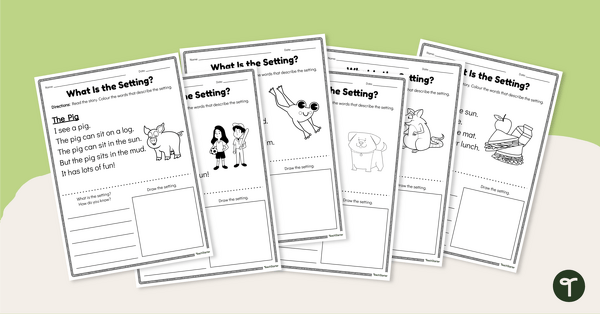
What Is the Setting? - Worksheets
Encourage your students to identify the setting in short and simple texts with this set of six worksheets.
- Plus Plan
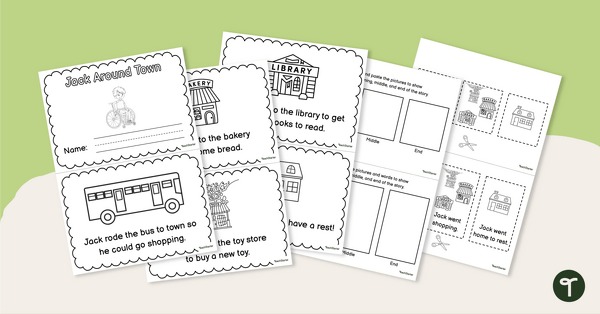
Beginning, Middle and End Mini-Book - Jack Around Town
Teach your students about the beginning, middle and end of a story with this narrative mini-book.
- Plus Plan

Sorting 3 to 5 Phoneme Words - Segmentation Activity
Practise segmenting 3 - 5 phonemes in words in this sorting activity
- Plus Plan
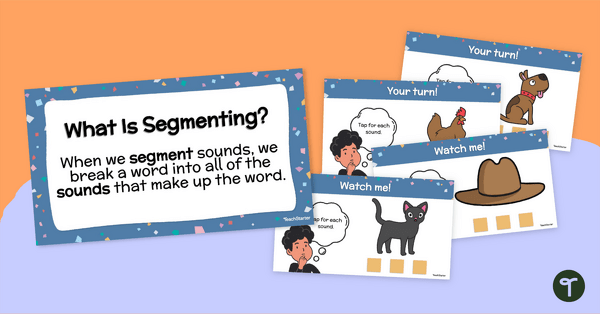
Introducing Phoneme Segmentation Teaching PowerPoint
Learn how to segment simple CVC words into their phonemes with this teacher-directed PowerPoint.